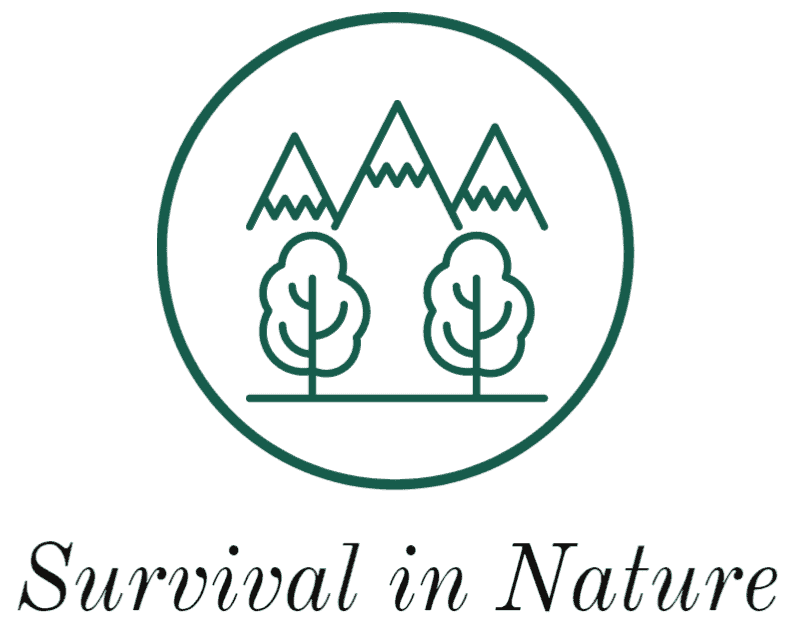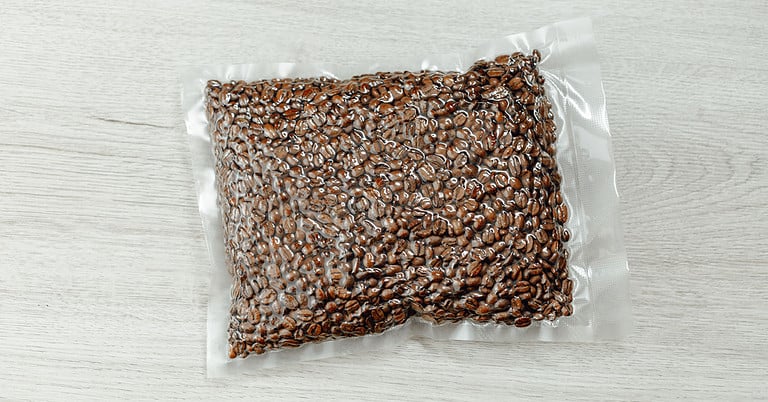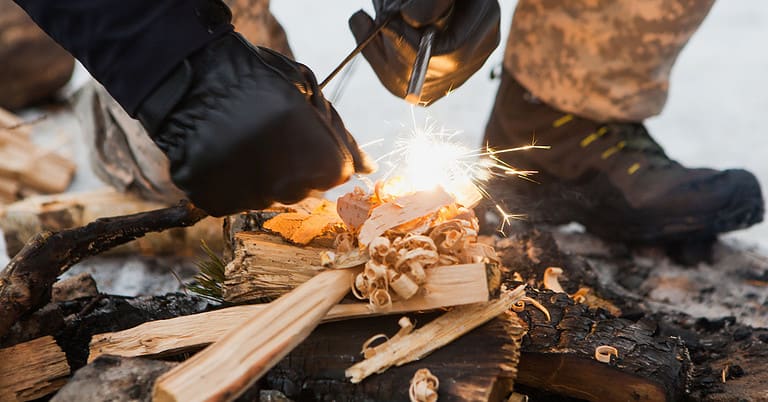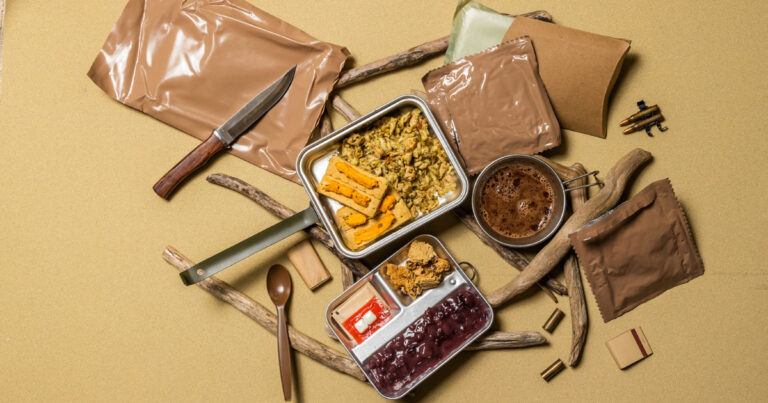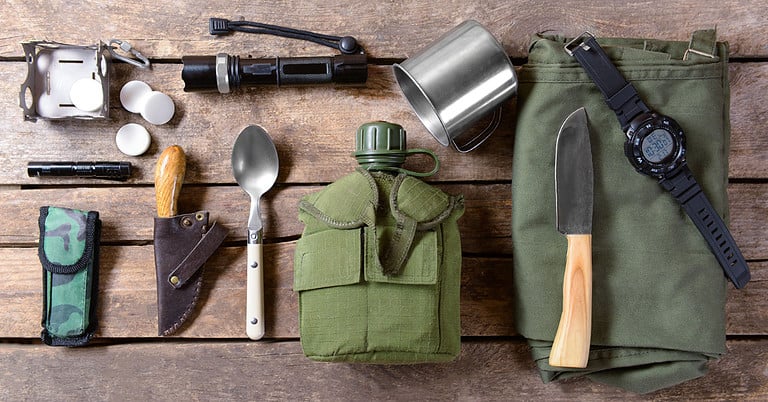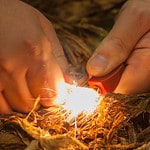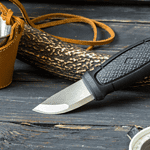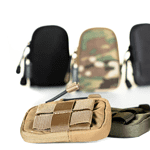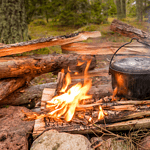Starting a fire is essential for those who enjoy nature and outdoor adventures.
Fire starters have been around for millennia, integral to outdoor adventures.
In this article, we'll examine the types of fire starters in depth.
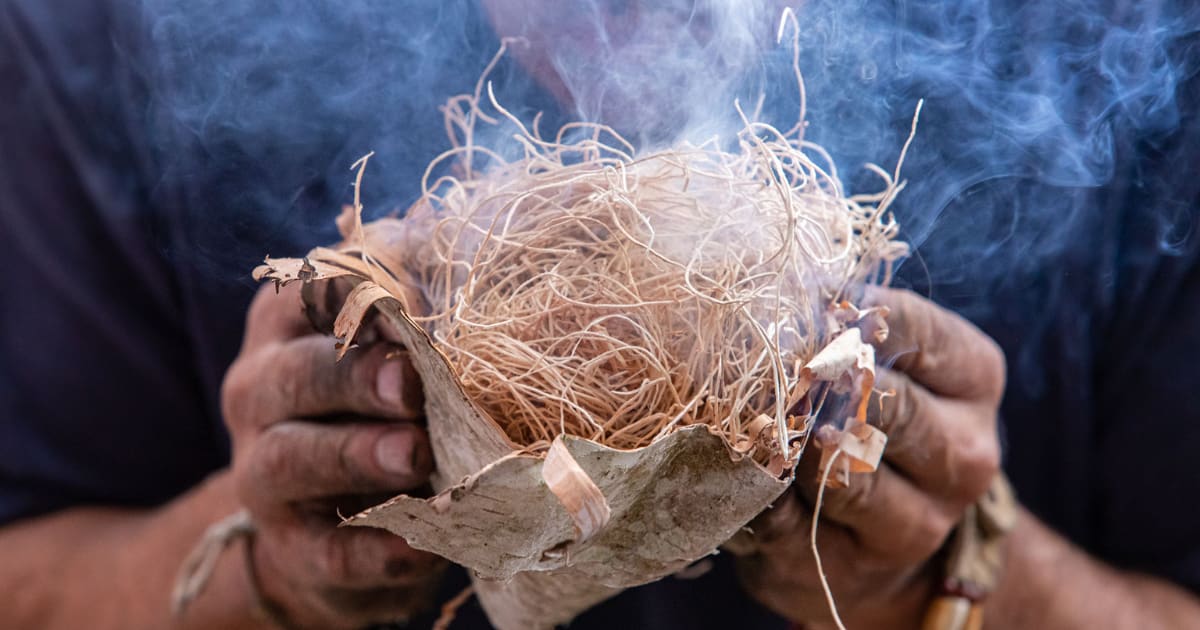
Fire Starters Are Essential in Outdoor Adventures
Fire starters are essential in outdoor adventures, providing warmth and comfort, cooking food, and signaling for help.
Let's take a closer look at why these fire starters are so crucial:
Warmth and comfort
Fire is an invaluable heat source when outdoors, particularly in cold environments.
It can distinguish between a comfortable night's sleep and one filled with tossing and frothing at the mouth.
Plus, fire makes for great drying out tools and clothing after rain or exposure.
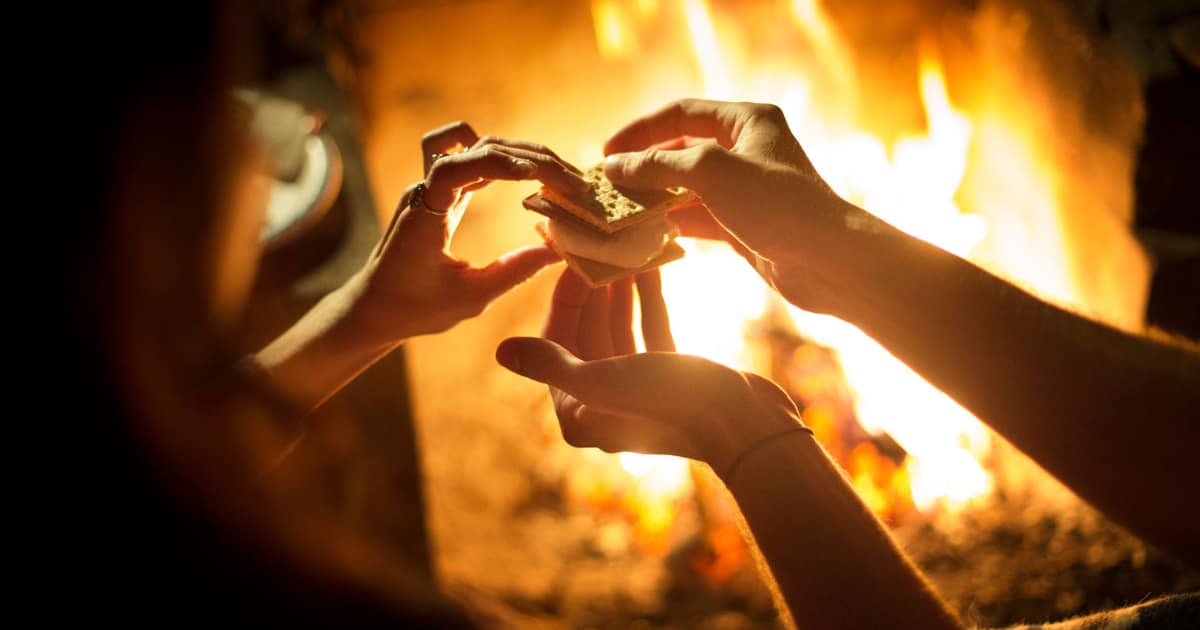
Cooking and food preparation
Cooking food over fire provides essential nutrition and energy for your adventures.
Furthermore, cooking food makes it safer to eat by killing bacteria or parasites that may be present in raw ingredients.
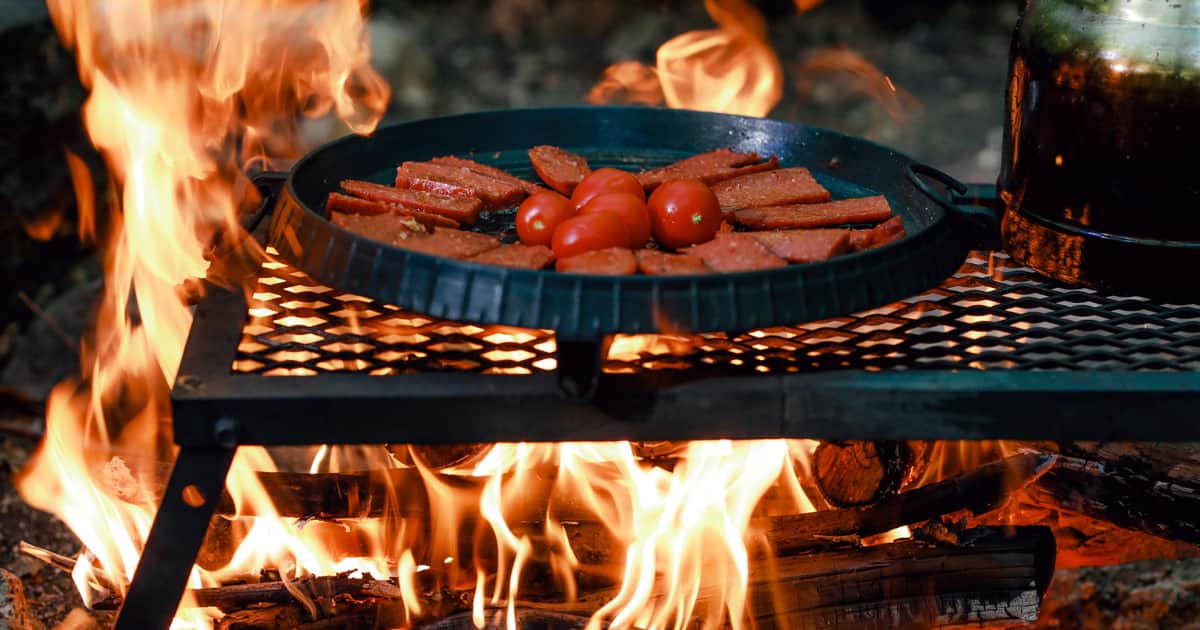
Purifying water
Boiling water is necessary to make it safe for consumption.
Boiling kills harmful bacteria, viruses, and parasites, decreasing the risk of waterborne illnesses.
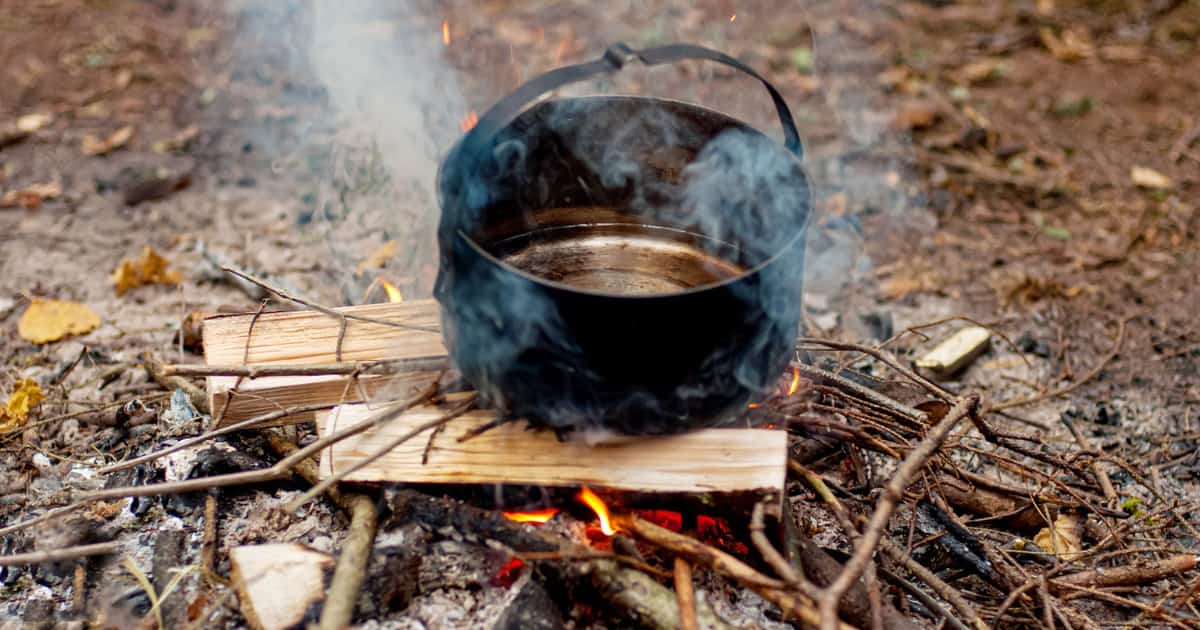
Signaling for help
Fires can be a lifesaver in times of emergency.
A well-built fire will produce plenty of visible smoke from a distance, alerting potential rescuers to your location.
Protection against wildlife attacks
Fire can serve as a deterrent to wildlife, keeping them away from your campsite.
The light and smell of burning fuel may deter curious animals from approaching too close and endanger yourself and your belongings.
The Evolution of Fire-Starting Technology
Over centuries, humans have devised numerous techniques and tools for starting fires.
Here is a brief overview of this evolving technology:
Early Fire Starters
Friction-based methods
Early humans used friction-based methods like hand and bow drills to start fires.
These involved rubbing two pieces of wood together to generate enough heat to create an ember.
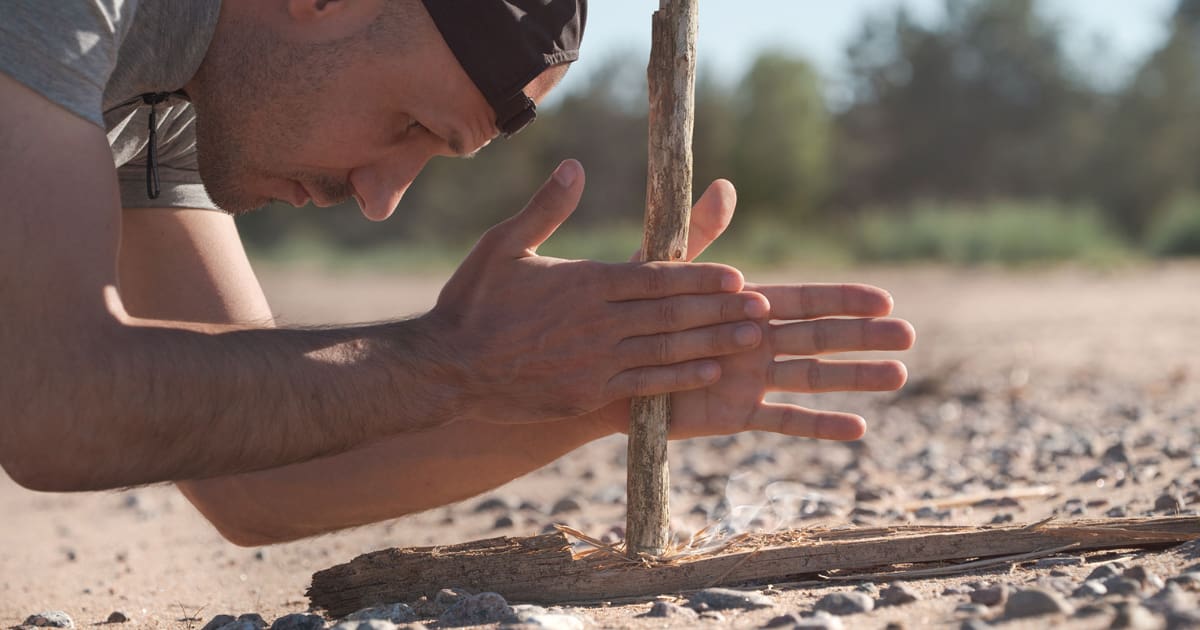
Flint and steel
The flint and steel method was revolutionary in fire-starting technology.
Smacking a piece of flint against steel would produce sparks, which could then be used to ignite tinder.
This method is still widely used today.
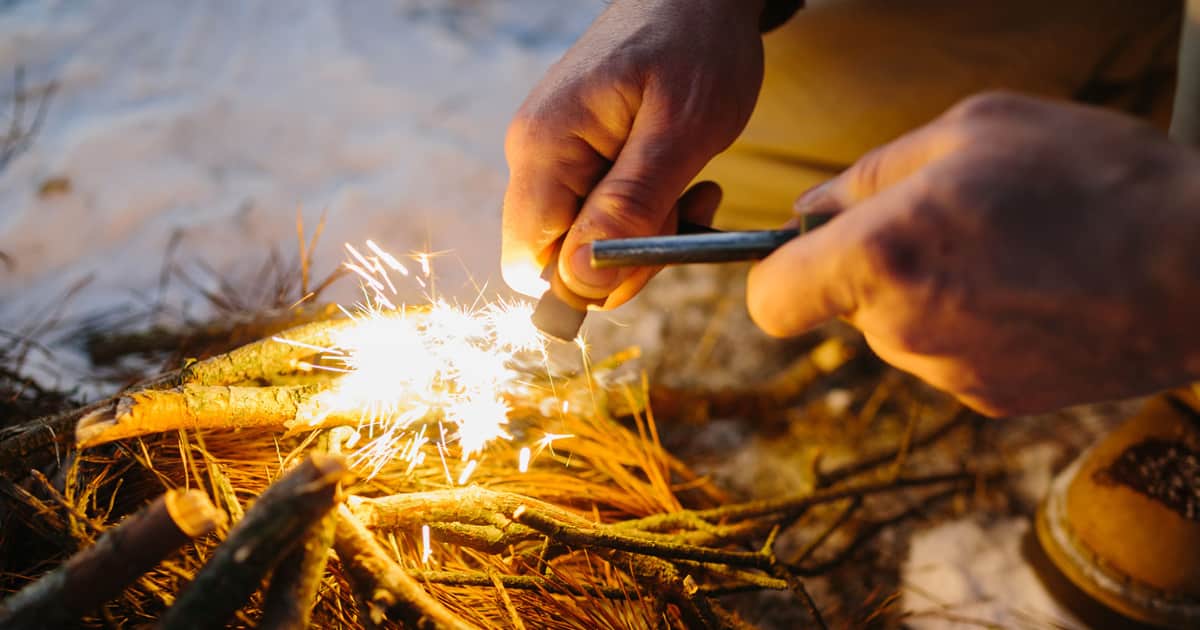
Modern Fire Starters
Matches
Invented in the 19th century, matches revolutionized fire-starting due to their ease of use and portability.
Even today, matches remain a popular choice for campers and outdoor adventurers.
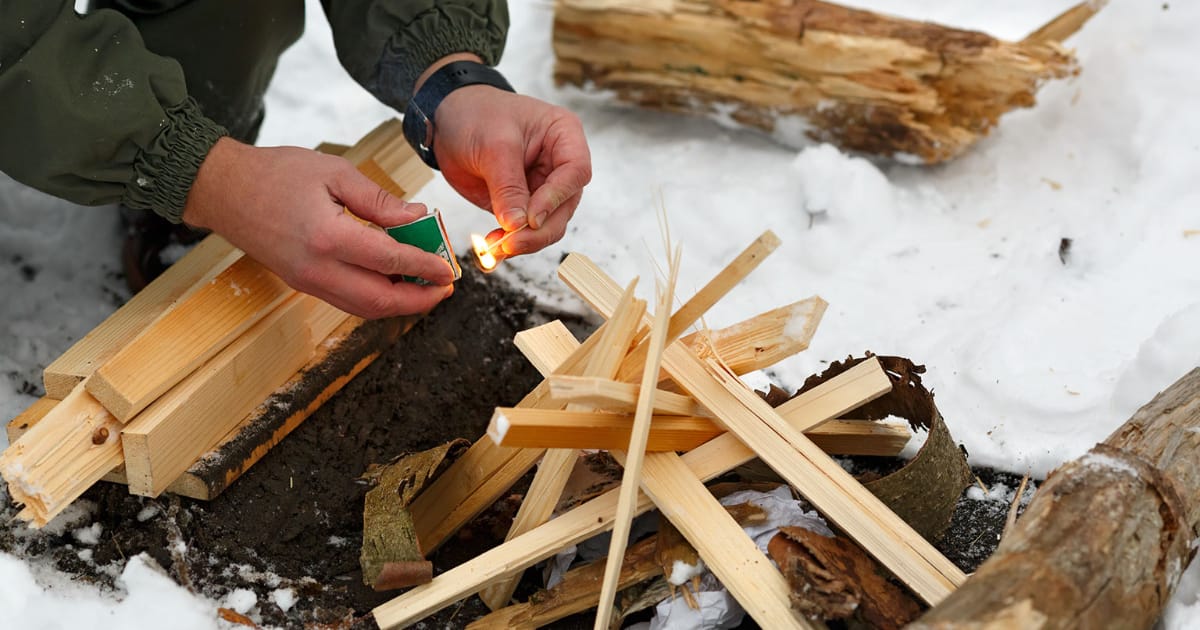
Lighters
Lighters are a prevalent fire-starting tool, using butane or other fuels to create a flame.
Lighters come in various forms, like disposable, refillable, and wind-resistant options, making them convenient for outdoor enthusiasts.
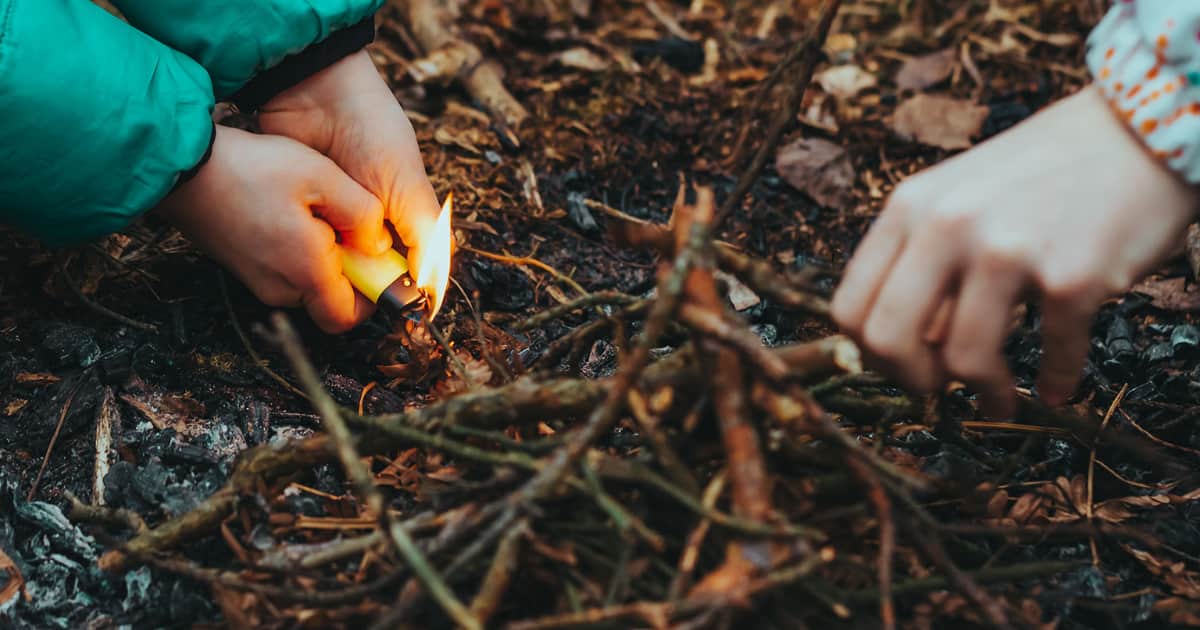
Ferrocerium rods
Also referred to as fire steels or flint rods, ferrocerium rods are a go-to tool for survivalists and outdoor adventurers.
When struck with a sharp-edged scraper, these rods produce hot sparks that ignite tinder.
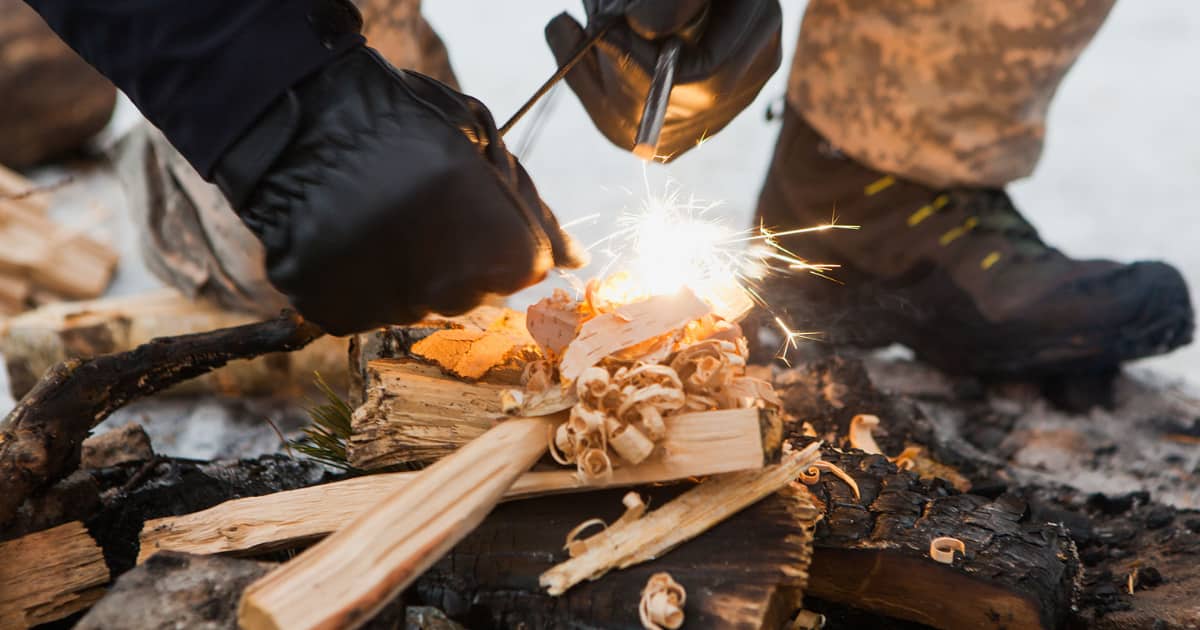
Solar fire starters
Leveraging the sun's power, solar fire starters use a parabolic reflector or magnifying lens to focus sunlight onto an isolated area and generate intense heat that can ignite tinder.
While these fire starters offer environmental and fuel-free options, they require sunny weather conditions to work.
Electric arc lighters
More recently developed, electric arc lighters use high voltage electrical current to create a plasma arc that can ignite tinder.
Rechargeable, wind-resistant, and flameless in design, these lighters offer versatile fire-starting capabilities.
Basic Types of Fire Starters
Matches
Matches are one of the most widely-used fire starters. They're affordable, accessible, and simple to use.
Matches come in various types, such as strike-anywhere matches and safety matches.
Strike-anywhere matches can be lit on any rough surface, while safety matches require a specific striking surface to ignite.
Lighters
Lighters are widely-used fire starters due to their small size and portability.
Available in both disposable and refillable varieties, disposable lighters offer cost efficiency, while refillable lighters can be refilled with butane gas for more sustainable options.
Ferrocerium Rods
Ferrocerium rods, also known as ferro rods, are a type of fire starter that creates sparks when struck with metal objects like knives.
Ferro rods are durable and long-lasting and can be used in any weather condition; plus, they're waterproof, so even wet, you can ignite it!
Magnesium Block
A magnesium block usually comes with a striker, which creates sparks when scraped.
The sparks ignite magnesium shavings, creating an incendiary flame.
Magnesium blocks are lightweight and waterproof - great for use in any weather condition!
Fire Pistons
Fire pistons are innovative fire starter that generates heat by rapidly compressing air.
This ignites the tinder, creating a flame.
Fire pistons are waterproof, durable, and can be used in any weather condition; however, some practice is needed to use them effectively.
Natural Fire Starters
Whether you're an experienced camper or new to the world of outdoor adventures, knowing how to start a fire using natural materials is practical and eco-friendly.
We will discuss five natural fire starters: tinder, kindling, fatwood, birch bark, and pine cones.
Tinder sticks
What is tinder?
Tinder is a highly flammable material used to catch sparks and create flames.
It's the initial material ignited before adding kindling or larger logs, as tinder helps quickly ignite kindling before adding more giant sticks or logs.
Tinder is essential in starting a fire, as it helps ignite wood quickly.
Types of tinder
Nature provides a wide variety of tinder.
Popular options include:
- Dry grass or leaves
- Tree bark (especially from birch or cedar trees)
- Cotton balls or lint
- Bird's nests or moss
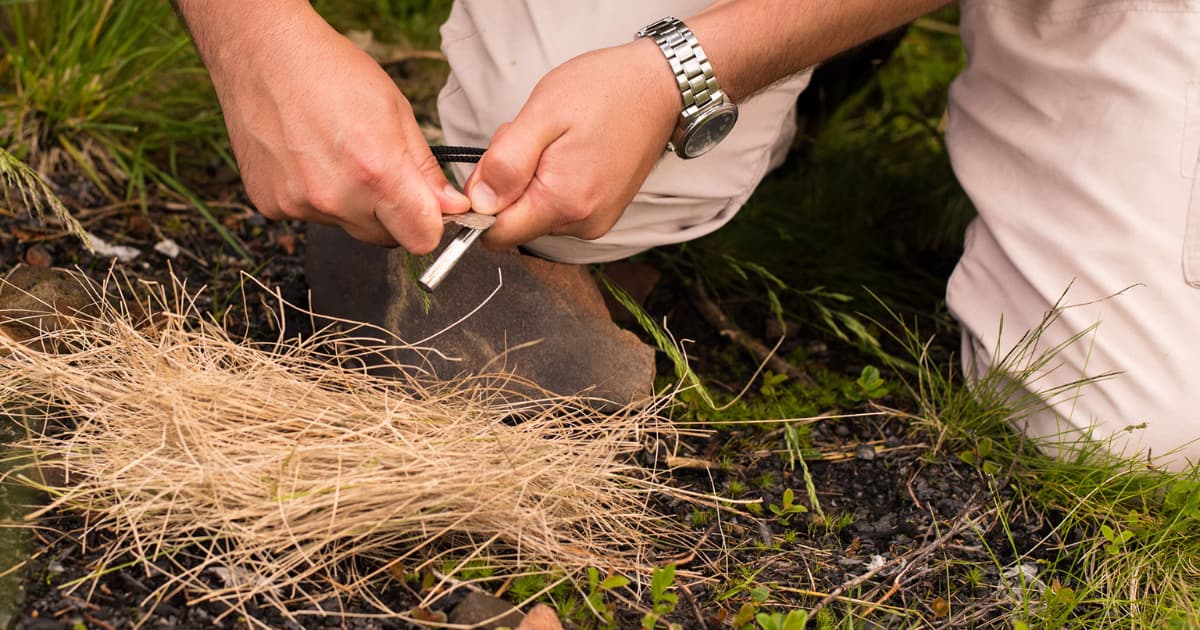
Kindling
What is kindling?
Kindling refers to small, dry sticks and twigs used for lighting a fire.
It's the second step to make a fire, as larger logs may take more effort to ignite than smaller kindling pieces.
Kindling helps build an efficient foundation for your fire by providing fuel for larger wood pieces to catch flame.
Types of Kindling
Nature provides a wealth of kindling materials, from small twigs and branches to dried leaves.
Look for dry, lightweight materials that snap easily when bent.
Some common kinds include:
- Hardwood twigs
- Softwood twigs
- Dry leaves or grass
- Small, dried bark pieces
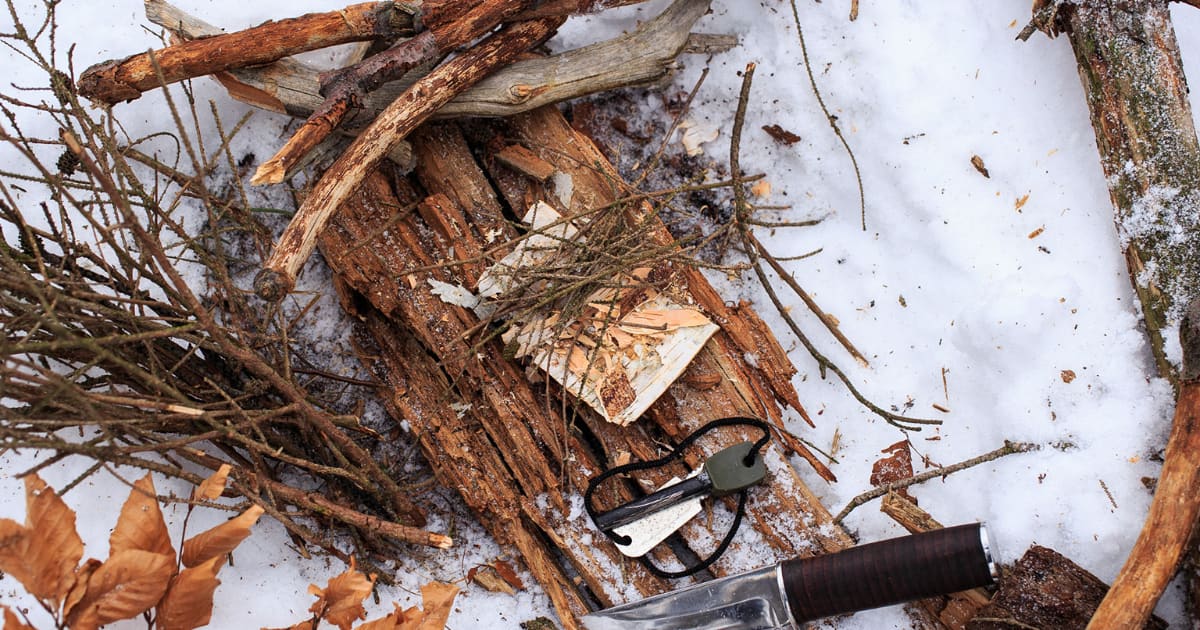
Fatwood
What is fatwood?
Fatwood, also referred to as "fat lighter," "lighter wood," or "rich lighter," is a resinous wood from the heartwood of pine trees.
Due to its high concentration of resin, it makes an excellent natural fire starter.
How to use fatwood
Cut or shave small pieces to ignite fatwood and place them in your tinder pile.
Ignite the fatwood with a spark or flame, and it will burn hot and long enough to catch kindling on fire.
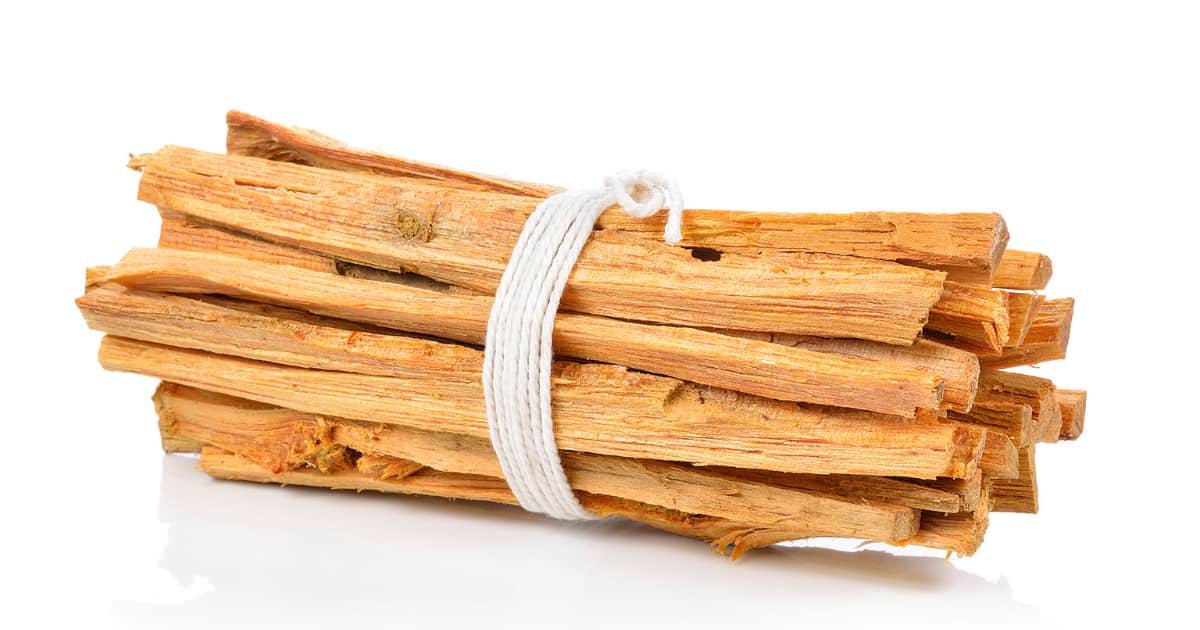
Birch Bark
What is birch bark?
Birch bark is the outer layer of bark from birch trees.
It's noted for its papery texture and natural oils, which make it highly flammable even when damp - making it an excellent fire starter.
How to use birch bark
To use birch bark as a fire starter, collect strips of bark from the tree (be sure not to damage or remove too much bark).
Crumple or tear the bark into smaller pieces and place them in your tinder pile.
Ignite the birch bark using either a spark or flame; It will catch fire and help ignite kindling.
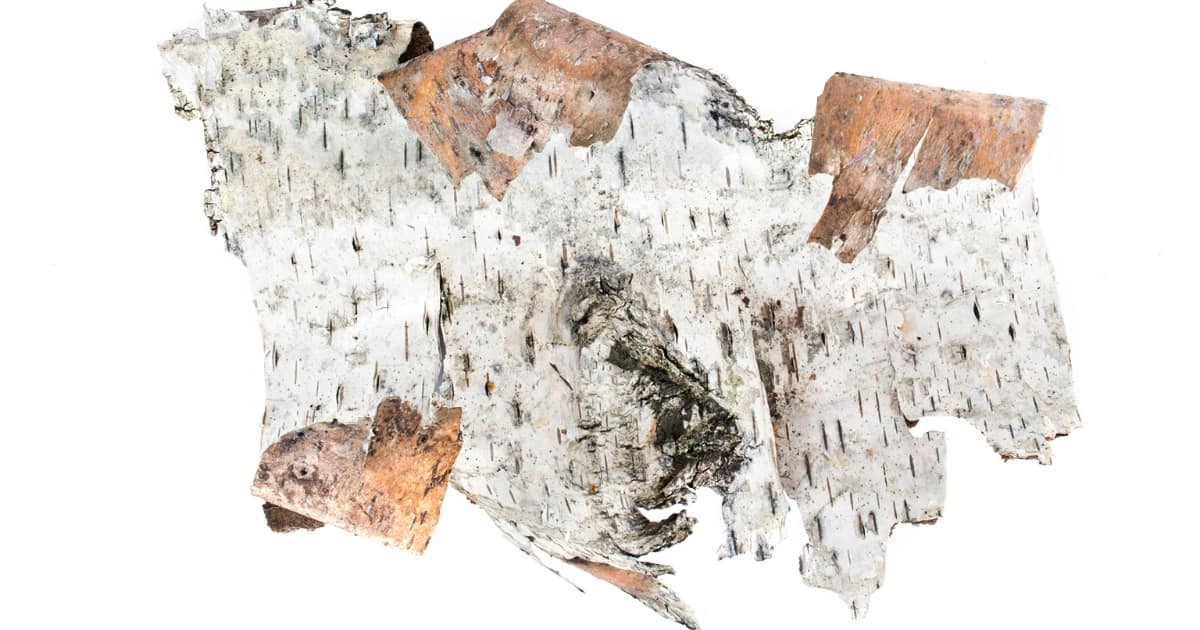
Pine Cones
Why use pine cones?
Pine cones make excellent natural fire starters due to their dry wood structure and resin content.
They catch fire easily - perfect for starting and maintaining a fire.
How to use pine cones
Collect several dry pine cones and place them in your kindling pile to use as fire starters.
Ignite the cones with a spark or flame; they will catch fire quickly, helping ignite all surrounding kindling and creating an even base for your fire.
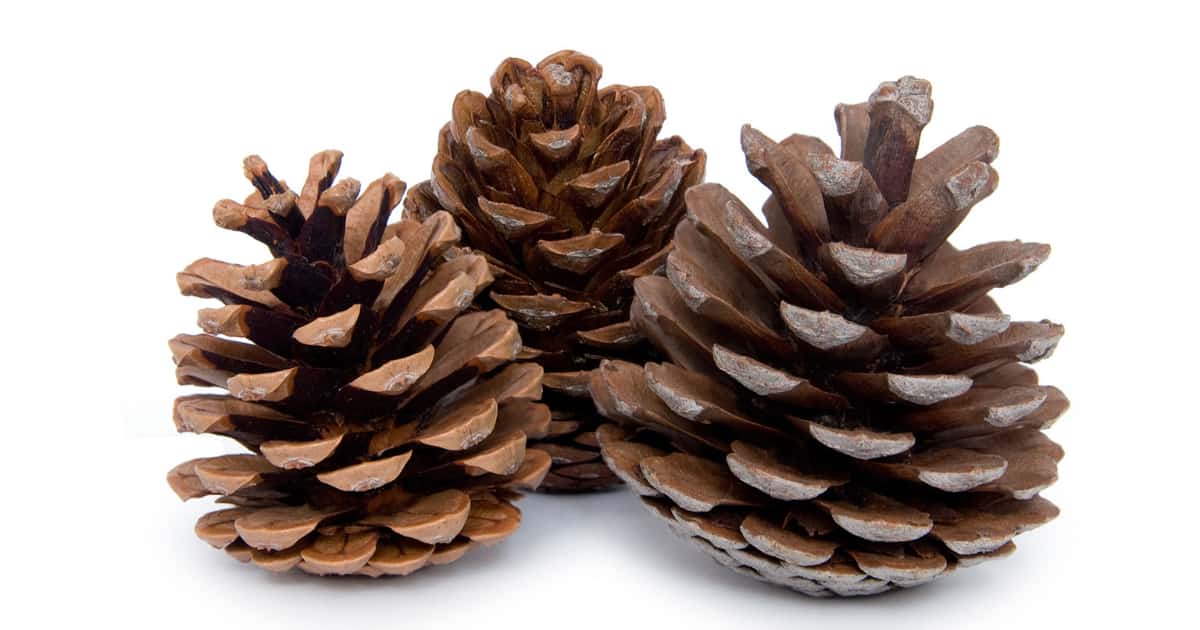
Chemical Fire Starters
Chemical fire starters have become an indispensable resource for campers, hikers, and survivalists when starting a fire.
Various chemical fire starters exist, including cubes, solid fuel tablets, and paste.
We'll examine each type's composition, applications, and safety aspects while comparing their performance.
Fire Cubes
Fire cubes: materials
Fire cubes are compact, lightweight, and portable fire starters made from compressed materials like wood shavings, paraffin wax, or sawdust combined with a flammable chemical.
Once lit, these cubes burn steadily for extended periods to provide consistent heat output.
Fire cubes: how to use
To ignite a fire with fire cubes, put them on a safe surface and ignite them with a match, lighter, or fire striker.
The cube will burn for several minutes, giving you enough time to build an efficient fire with additional kindling and fuel.
Solid Fuel Tablets
What are the advantages?
Solid fuel tablets are compact and lightweight, making them a favorite among campers, hikers, and survivalists.
Most are made from hexamine - an easily ignitable chemical compound that burns cleanly with little residue or smoke.
Solid fuel tablets: limitations
Solid fuel tablets can be convenient and efficient but may not be ideal for all purposes.
They tend to be sensitive to moisture, with a shorter burn time than other chemical fire starters.
Furthermore, burning solid fuel tablets produces an unpleasant odor that some users may find unpleasant.
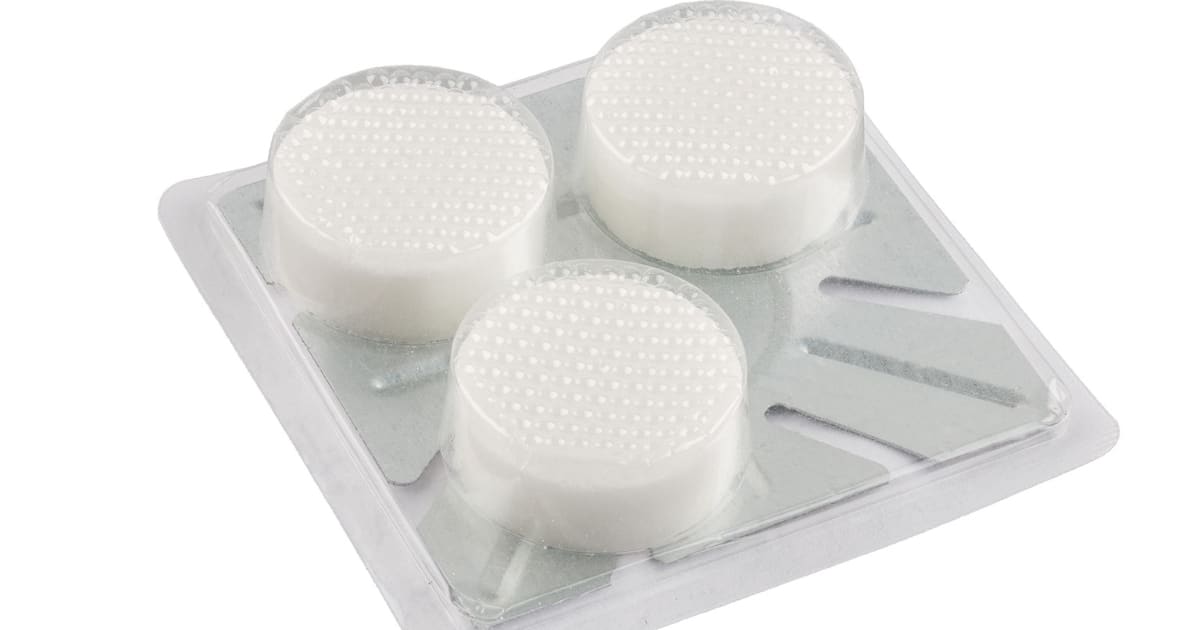
Fuel Paste
Fuel paste: utilization
Fuel paste is a viscous, thick substance in tubes or small containers.
It contains flammable chemicals like alcohol or petroleum-based compounds, which ignite quickly at high temperatures.
While fuel paste is easy to store and transport, caution should be exercised to avoid puncturing the container or exposing it to excessive heat.
Unconventional Fire Starters
While traditional fire starters are available on the market, you might not realize that some unconventional items can also help create a blaze.
We'll look at five unconventional materials: dryer lint, steel wool, batteries, hand sanitizer, and gum wrappers - let's get started!
Dryer Lint
Why use dryer lint?
Did you know the fluffy lint collected in your dryer lint trap can be an incredibly effective fire starter?
It's true! Dryer lint contains tiny fibers that ignite quickly and efficiently when exposed to flame.
Plus, it's also lightweight, portable, and essentially free because otherwise thrown away.
How to utilize dryer lint
To utilize dryer lint as a fire starter, collect it from your dryer's lint trap and store it in either a small container or a ziplock bag.
When ready, create a pile of lint in the center of your fire pit or fireplace, add some kindling on top, then ignite with a match, lighter, or another ignition source.
Watch as the fire spreads rapidly throughout all of your kindling!
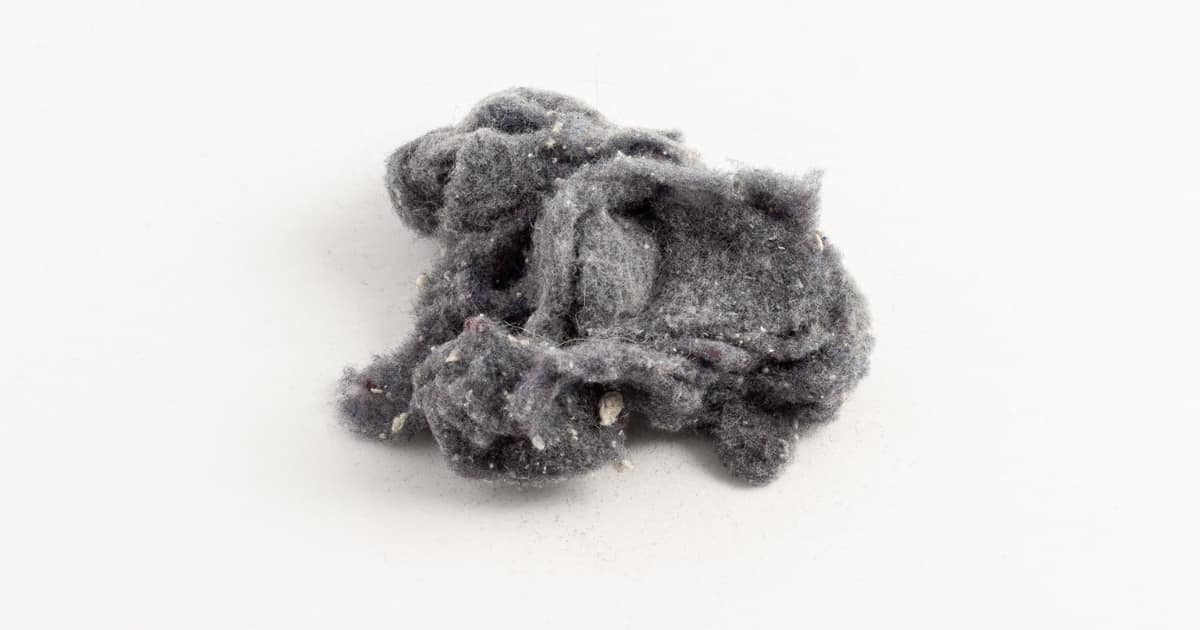
Steel Wool
Why use steel wool?
Steel wool is an unorthodox fire starter that's surprisingly effective.
Made of fine steel strands, it creates a large surface area that ignites quickly when exposed to sparks.
Steel wool is lightweight, accessible, and inexpensive - making it the perfect addition to your fire-starting arsenal.
How to start a fire with steel wool
If you don't have access to conventional fire starters such as a lighter or matches, you will need either a 9-volt battery or another power source that can generate sparks to ignite steel wool.
Take some of the wool and touch its terminals to the battery terminals.
This will cause it to heat up and produce sparks, igniting it.
After some time has passed, add kindling or larger fuels as fuel for your fire.
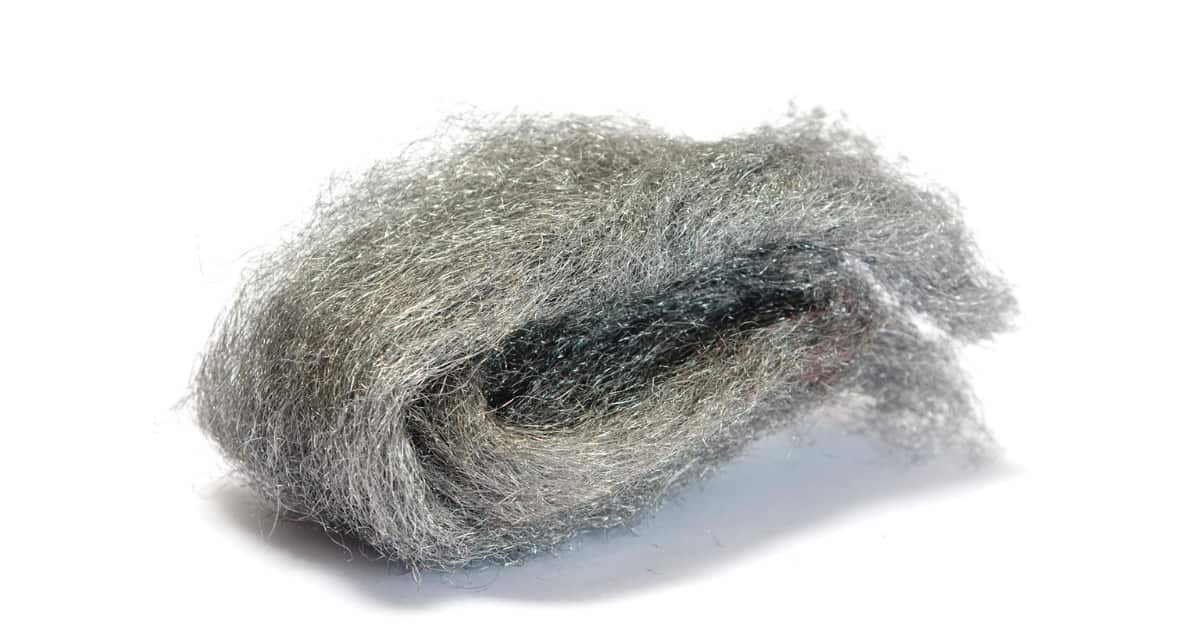
Batteries
Why use batteries?
Batteries, particularly 9-volt ones, can be a reliable fire-starting option when other methods fail.
The electrical current generated by the battery generates enough heat to ignite tinder or other flammable materials quickly and easily, making them an ideal and versatile alternative for starting a fire when other options are unavailable.
How to start a fire with batteries
To start a fire using a 9-volt battery, you'll need some tinder, such as steel wool, paper, or even a tiny piece of cloth.
Position this near your intended fire location and touch the battery terminals to the tinder, causing either an electrical spark or enough heat to ignite the material.
Add kindling and larger fuel pieces later for additional warmth building your flame - but always exercise caution when using batteries this way!
Hand Sanitizer
Why use hand sanitizer?
Hand sanitizer can be an amazingly effective fire starter due to its high alcohol content, which makes it highly flammable.
Since many people carry hand sanitizer when camping or during cold and flu season, having this handy and accessible option for starting a fire when other methods aren't available is convenient and accessible.
How to use hand sanitizer
To begin a fire with hand sanitizer, squeeze some onto paper or cotton balls that are flammable materials.
Place this covered tinder into your fire pit or fireplace, and ignite with a match, lighter, or other ignition sources.
The alcohol in the hand sanitizer burns rapidly, creating a flame that can then spread onto kindling and larger fuel sources.
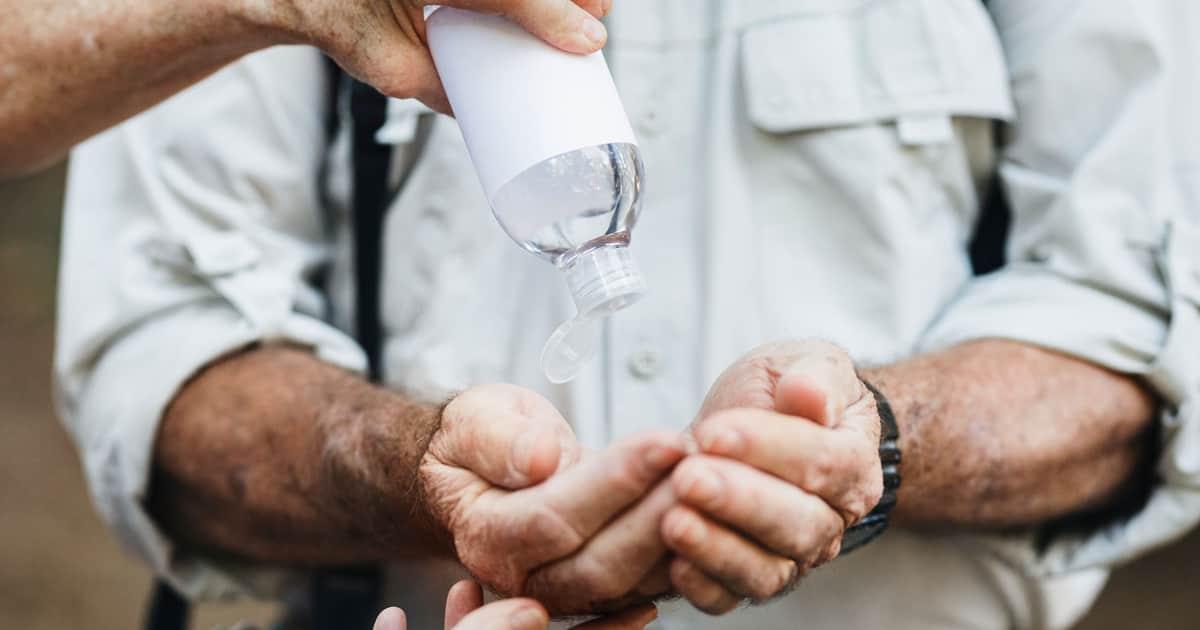
Gum Wrappers
Why use gum wrappers?
Gum wrappers, especially foil-lined ones, make great fire-starting tools because they can conduct electricity and create a spark.
Their lightweight design makes them easy to carry in your pocket or backpack for emergencies or when you need something quickly.
How to use gum wrappers
If you cannot access conventional tools such as a fire starter, you will need a battery to use gum wrappers.
Cut or tear the wrapper into a thin strip while exposing its foil side.
Fold it in half so there is only a tiny gap between both foil sides at the center, then touch its ends to the terminals of your battery; this will create a spark in that gap which ignites your wrapper.
Once burning, use it for lighting tinder and kindling on your fire.
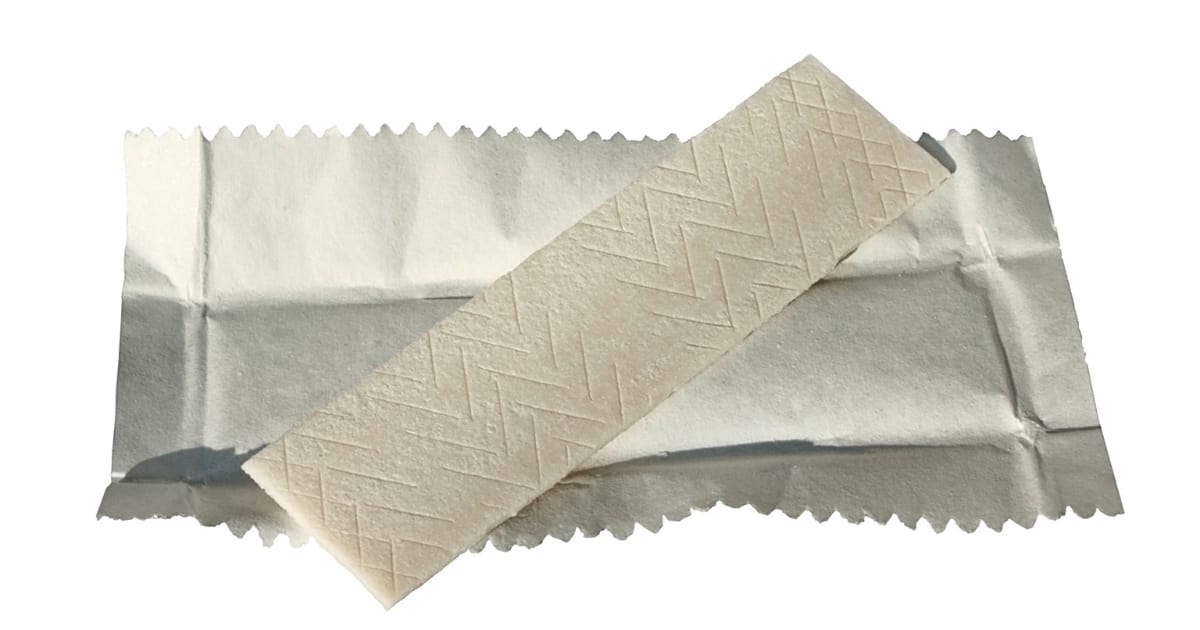
Fire Starter Accessories
Fire starters are indispensable tools for campers, hikers, and survivalists alike.
Here we'll look at different fire starters and their features - such as built-in accessories, additional accessories, and multi-tool fire starters.
Emergency whistles
Some fire starters come equipped with built-in emergency whistles.
These whistles can be used to signal for help during times of crisis, making them a vital addition to any survival kit.
Plus, since the whistle is part of the fire starter, you don't need to carry an extra whistle.
Compass
Fire starters often come equipped with an integrated compass, providing you with navigation through the wilderness without needing an extra device.
Not only does this save space and weight in your backpack, but it's also incredibly reliable!
Keychain ring
Staying organized is vital in the wilderness.
A keychain ring is handy for this task as it securely holds all your small tools in one place and prevents them from getting lost.
Waterproof magnesium rod
Some firestarters come with an additional waterproof magnesium rod instead of just the classic one.
Magnesium is highly flammable and can start fires even in wet conditions - making it an essential survival item.
The waterproof coating on the magnesium rod ensures it remains dry even in the rain or when submerged in water, guaranteeing ready access whenever you need it - regardless of weather or environmental conditions.
Multi-Tool Fire Starters
Multi-tool fire starters leverage other essential tools, making them an invaluable addition to your outdoor gear.
Fire starters combine the functionality of a fire starter with other essential items for maximum versatility when camping or other outdoor adventures.
Types of Multi-Tool Fire Starters
Multi-tool fire starters come in a variety of types:
Folding multi-tools
Folding multi-tool fire starters often include various tools, such as knives, screwdrivers, bottle openers, and fire-starting components.
These tools fold into a compact and portable shape for ease of transport and versatility in various tasks.
Keychain multi-tools
Keychain multi-tool fire starters are small and lightweight, designed to attach to your keys or backpack.
These fire starters typically include essential tools like a bottle opener, screwdriver, mini knife, and the fire-starting component.
How to Select the Correct Multi-Tool Fire Starter
Consider your needs
When selecting a multi-tool fire starter, factor in all the tasks you'll perform during outdoor adventures.
For instance, if cooking will be part of the activity, opt for one with an integrated can opener or knife.
Assess features vs. price
Multi-tool fire starters may offer numerous features, but they come at a higher cost.
Determine your budget and decide which features are essential for you and which you can do without.
Evaluate durability and material
Durability is essential when selecting your multi-tool fire starter, as it will be exposed to extreme outdoor elements.
Look for materials such as stainless steel or high-quality aluminum, which are known for their strength and resistance to rust.
Assess size and weight
A compact and lightweight multi-tool fire starter will be easier to transport and won't bog down your backpack, but make sure its size and weight don't compromise functionality.
Selecting the Best Fire Starter
Having a reliable fire starter is essential when embarking on an outdoor adventure.
From cooking meals to providing warmth and light, having an effective fire is essential for comfort and safety.
Considerations When Selecting a Fire Starter
Material and design
The material and design of a fire starter are critical in its performance.
Common choices include ferrocerium rods, magnesium bars, and matches; each has advantages and drawbacks, so choosing one that best meets your needs and skill level is essential.
Ease of use
A good fire starter should be user-friendly, even for beginners.
Some options require more skill than others, so practicing with your chosen fire starter is essential before embarking on your adventure.
Reliability and durability
A reliable fire starter is essential for any outdoor adventurer.
Look for options resistant to water and wind damage and can easily withstand outdoor usage.
Environmental Factors to Consider
Weather conditions
Weather conditions are an integral factor in fire-starting success.
Wet or windy conditions can make starting and maintaining a fire challenging, so select a starter that performs well under various weather conditions.
Altitude
Higher altitudes can have an impact on the performance of sure fire starters.
Oxygen levels decrease with altitude, potentially impacting combustion.
Be sure your chosen starter is suitable for the elevations you'll encounter.
Fuel source
Natural fuel sources, like dry wood and tinder, can affect your fire-starting success.
Consider the environment you'll work in and select a fire starter compatible with those available materials.
Using Fire Starters
Preparing the fire area
Before using your fire starter, ensure the area is cleared of debris, and a proper fire pit has been constructed.
This will help prevent accidental fires and make starting and maintaining your fire easier.
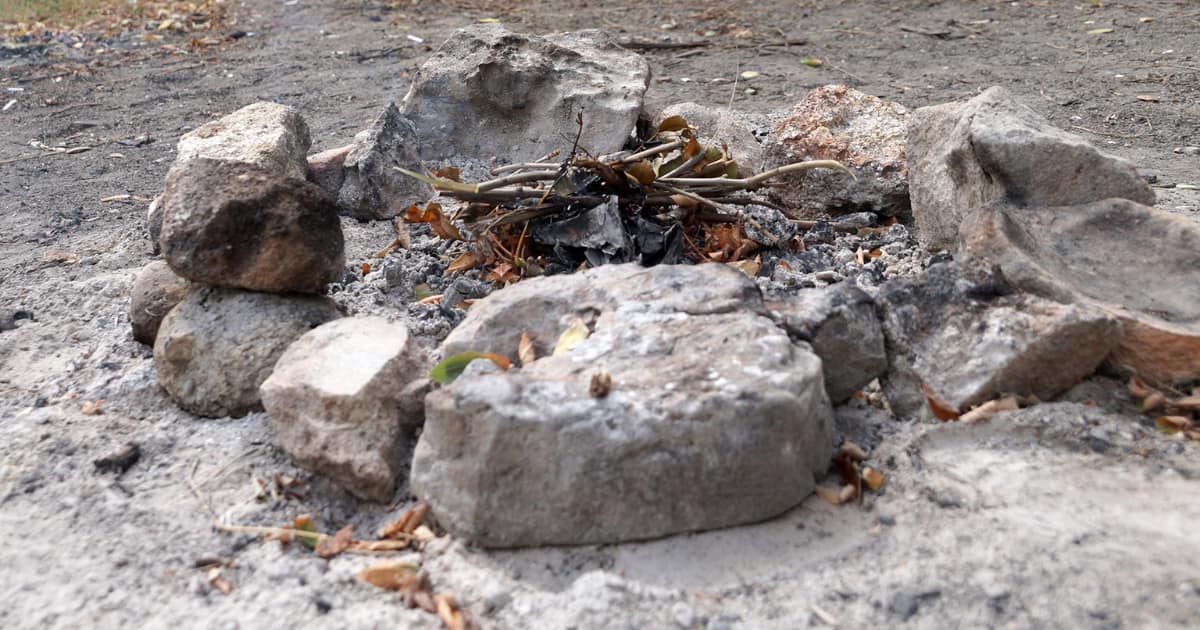
Safe use and storage
Fire starters must always be handled and stored safely to avoid accidents.
Keep your fire starter away from flammable materials, and store it securely when not in use.
Easy Fire-Starting Techniques
Tinder, Kindling, and Fuel
To start a fire efficiently, gather tinder, kindling, and fuel. Tinder is a highly flammable material, such as dry grass or leaves that ignite easily.
Kindling includes larger twigs and branches for building a fire, while fuel consists of larger branches or logs to sustain it over time.
Fire lay structures
When selecting a fire lay structure, several options depending on your needs and environment.
Popular options include the teepee and log cabin.
Each has its advantages that can help ensure successful fire-starting experiences.
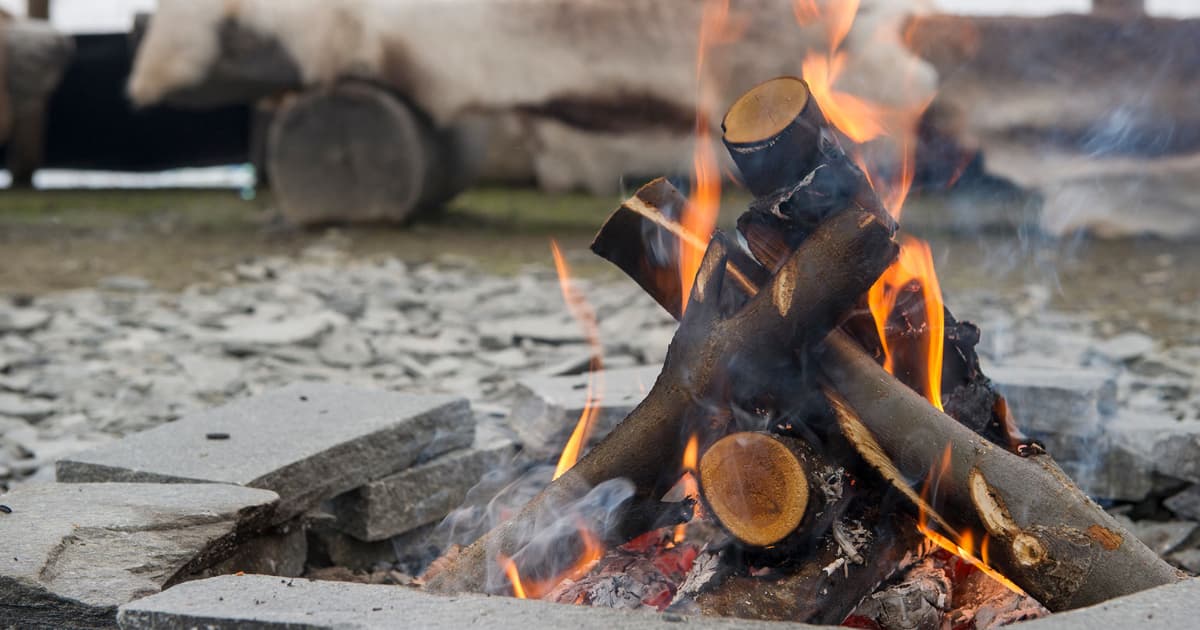
Hard Fire-Starting Techniques
Bow drill
The bow drill is an ancient fire-starting method that utilizes friction to generate heat and ignite tinder.
You'll need a bow, spindle, fireboard, and bearing block to use it.
Though challenging to master, this skill set proves invaluable for outdoor adventurers of any expertise.
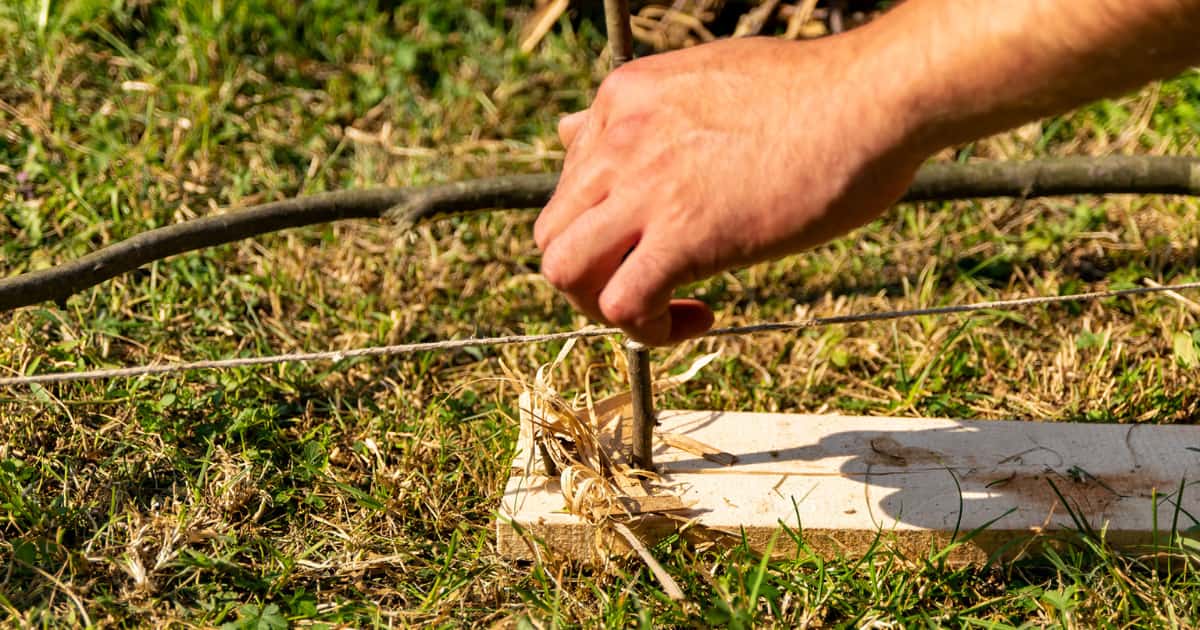
Flint and steel
Flint and steel is an old-school fire-starting method.
By striking flint against a steel striker, sparks are created that can ignite tinder.
This method has proven dependable even in damp conditions, making it popular among experienced outdoor adventurers.
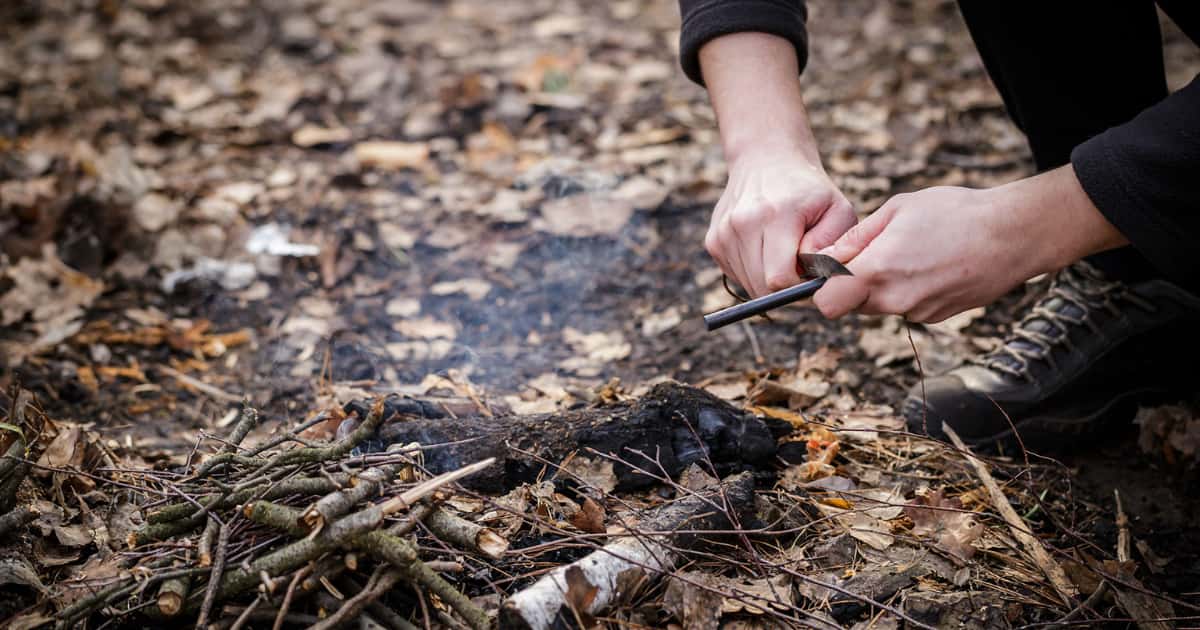
Troubleshooting Common Issues
When starting a fire, common issues include damp tinder, inadequate fire starters, and inadequate ventilation.
Not addressing these problems early on can cause frustration and wasted time; thus, it's essential to address them immediately.
Solutions
To combat damp tinder, try drying it in the sun or close to your body for warmth.
If your fire starter isn't performing optimally, consider upgrading to a more reliable model.
In case of inadequate ventilation, reposition the fire lay structure for improved airflow.
Fire Starters: Safety Advice, Precautions, and Management
Nothing beats the feeling of gathering around a fire with friends and family for some outdoor fun.
However, fire starters must always be used responsibly to ensure everyone's safety and that of the environment.
Check essential safety tips, precautions, proper management techniques for fire starters, and ways to prevent wildfires.
Fire Safety Tips
Selecting an appropriate location
Starting a fire safely begins with choosing an area away from tents, trees, and flammable objects.
Pick a flat surface free from leaves, grass, and combustible materials.
Use an existing fire pit or create one out of rocks, for starters.
Gather materials safely
Gather dry leaves, twigs, and branches for kindling and larger logs for fuel.
Green or wet wood should always be avoided since it produces more smoke and is harder to ignite.
Also, remember not to cut live trees or branches since doing so damages the ecosystem and is usually illegal.
Begin to build a safe fire
Begin by building a small teepee or log cabin structure out of kindling, gradually adding larger branches as the fire grows.
Avoid using flammable liquids such as gasoline to start a fire, as these can quickly lead to uncontrollable and dangerous flames.
Fire Safety Precautions
Never leave a fire unattended
One of the essential fire safety guidelines is never leaving a fire unattended.
Fires can spread rapidly, and an unattended one poses a significant risk to everyone and everything nearby.
Assign someone to monitor the fire at all times and ensure it has been entirely extinguished before leaving.
Keep flammable items away
Be sure to keep all flammable items, such as clothing, camping gear, and food, safe from the fire.
Sparks from burning materials can travel through the air and ignite these items quickly if not handled cautiously.
Create an emergency plan
Before beginning a fire, ensure you have an emergency plan.
Know the location of nearby water sources such as lakes or rivers, and keep shovels or other tools handy for extinguishing the flame if necessary.
Furthermore, ensure everyone in your group knows the plan in case an unexpected crisis arises.
Proper Fire Management
Extinguishing a fire
Allow the wood to burn down to ash to extinguish a fire effectively.
Pour water onto the embers while stirring them continuously so all hot spots are doused.
Continue adding water and stirring until no flame is present and cool to the touch.
Cover the embers with dirt or sand if water is unavailable while stirring continuously and checking for heat signs.
Monitoring wind and weather conditions
Wind can quickly shift the direction and intensity of a fire.
Be mindful of your surroundings, adjust your management strategy as needed, and consider extinguishing it to prevent embers from spreading.
Furthermore, check local weather forecasts for potential rain or drought conditions impacting fire safety.
Safe cooking practices
When cooking over an open flame, use designated cooking equipment like a grill or camp stove to ensure stability before adding pots or pans.
Also, keep an eye on your food while it's cooking, as grease or debris from the fire could cause flare-ups.
Wildfire Prevention
Comply with local regulations
Obey all local laws and fire bans.
These measures are in place to safeguard both the environment and public safety.
If you're uncertain which rules apply in your area, contact the park service or forest ranger for clarification.
Notifying unattended fires
If you encounter an unattended fire, notify the proper authorities, such as park rangers, campground staff, or local emergency services.
Doing this can help prevent wildfire spread and safeguard the environment in its vicinity.
Accurately dispose of flammable waste
Dispose of cigarettes, matches, and other combustible materials responsibly.
Ensure all cigarettes have been extinguished before disposal, and use designated containers or trash receptacles for all waste.
Fire safety is of the utmost importance when using fire starters, as it protects people and the environment.
By adhering to outlined safety tips, precautions, and proper fire management techniques, you can savor the warmth and ambiance of a campfire while minimizing risks.
Summary of Key Points:
- Fire starters are indispensable during outdoor adventures to provide warmth, cook food, and signal for help.
- Fire-starting technology has advanced tremendously, from simple methods like rubbing sticks together to modern-day options that utilize chemicals or electricity.
- Three primary types of fire starters exist: natural, chemical, and unconventional.
- Natural fire starters include kindling, tinder sticks, fatwood, birch bark, and pine cones.
- Chemical options include fire gel, cubes, solid fuel tablets, and fuel paste.
- Unconventional fire starters include dryer lint, steel wool, batteries, hand sanitizer, and gum wrappers.
- Multi-tool fire starters combine multiple tools into one to make them versatile and practical in various scenarios.
- When selecting a fire starter, consider factors like environment, availability, and ease of use.
- Basic techniques for starting fires include the teepee, lean-to, and pyramid methods.
- Advanced options include fire plow, hand drill, and bow drill methods.
Final Thoughts:
Being prepared for all situations, including starting a fire, is essential when exploring the outdoors.
Thanks to today's advanced fire-starting technology, there's no reason to get caught without an effective way of making one.
FAQ
How long do fire starters last?
The duration of a single fire starter depends on its type and quality; typically, they last anywhere from minutes to an hour or more.
On the other hand, some high-quality products may burn for an extended period or more.
Are fire starters safe to use?
Fire starters are generally considered safe.
You must follow the manufacturer's instructions closely and use them in a well-ventilated area.
Also, keep fire starters away from children and pets, and store them in an airtight, cool, dry location.
Can fire starters be reused?
Some fire starters can be reused, while others are meant for single use only.
For instance, certain compressed sawdust or wax-based fire starters can be broken into smaller pieces and used multiple times.
On the other hand, other fire starters, like fire-lighting gel, require only a single application.
What are the best fire starters for wet conditions?
When starting a fire in wet conditions, choosing an item that can withstand moisture is essential.
The best options include fatwood, cotton balls soaked in petroleum jelly, and waterproof matches.
You could also use commercial fire starters designed explicitly for wet environments.
How should you dispose of used fire starters?
Fire starters should always be disposed of safely and responsibly.
The starter can be discarded in regular household trash if wholly burned.
However, if only partially burnt or still contains flammable material, allow cooling entirely before dispensing it in a metal container or taking it to a hazardous waste facility.
Always consult local regulations regarding proper disposal methods.
